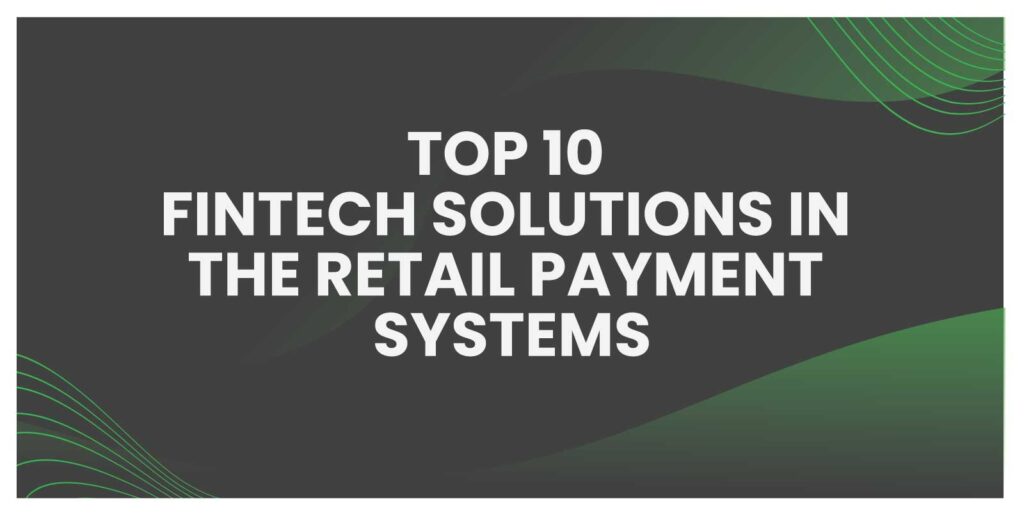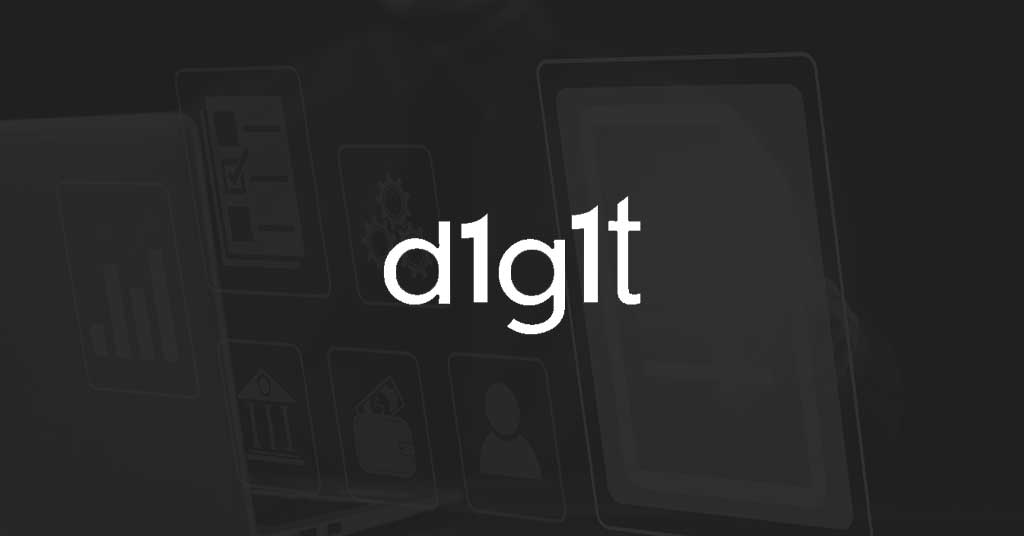The integration of fintech and retail is not merely a trend; it is a fundamental transformation that is reshaping the retail landscape on multiple fronts. This transition is characterized by the incorporation of cutting-edge technologies, including artificial intelligence (AI), blockchain, and data analytics, which are employed to establish more secure and personalized purchasing experiences. To remain competitive in a market that is swiftly transitioning to digital-first solutions and to satisfy the increasing demands of tech-savvy consumers, retailers are increasingly relying on these innovations.
This article offers a thorough examination of the manner in which fintech innovations are responsible for substantial transformations in the retail sector. The retail sector is confronted with both opportunities and challenges as fintech continues to develop. It is imperative for retailers who aspire to prosper in the digital age to comprehend and adjust to these developments.
Top Fintech Solutions in The Retail Payment Systems
The Rise of E-Commerce
The expansion of e-commerce has been stimulated by fintech, which has also provided individuals with a higher degree of control over their payments. For example, by permitting them to divide their orders into multiple installments. Fintech has been instrumental in the success of numerous technology titans, including Amazon and Rakuten. The existence of e-commerce is highly unlikely to have occurred in the absence of such technology to facilitate online payments. In addition, the expansion of e-commerce has been significantly facilitated by platforms such as Square and Shopify, which facilitate the establishment of online stores for businesses. In conclusion, it would be an understatement to assert that fintech has been a significant factor in the development of online retailing.
Read: Fintech in Hospitality: Top 10 Fintech Solutions for Hotels
Streamlined Payment Processes
- Perhaps the most apparent way fintech has transformed the retail industry is through payments. It has enabled customers to make purchases using various methods, including their phones.
- The advent of contactless payments has brought about a significant transformation. The global adoption of contactless payment methods has significantly increased, driven by the COVID-19 pandemic, which has necessitated minimal physical contact. According to a study conducted by Juniper Research, the global value of contactless transactions is anticipated to reach $15.7 trillion by 2029. This change improves the customer experience and enables retailers to process transactions more efficiently, thereby reducing wait times and increasing customer satisfaction.
- Tokenization is another critical invention in the security of retail transactions, as it is essential for safeguarding consumer data during digital payments. Tokenization substitutes confidential payment information, such as credit card numbers, with a distinctive identifier or “token” that is ineligible for use outside of the transaction. This approach significantly diminishes the risk of data vulnerabilities and fraud, as the payment data is never disclosed. Tokenization has become a standard practice among major payment processors, such as Visa and Mastercard, particularly in mobile wallet transactions.
- The retail industry has been significantly affected by the proliferation of digital wallets and the development of biometric authentication and tokenization. These technologies enhance the overall purchasing experience by providing a more secure and efficient payment process, thereby making it more convenient and accessible for consumers. The retail industry’s ongoing digital transformation is evident in the extensive adoption of digital payments and wallets, which is motivated by the necessity to satisfy the changing expectations of contemporary consumers.
Read: 10 AI ML Applications in the Identification and Prevention of Different Types of Fraud
Buy Now, Pay Later (BNPL)
- The “Buy Now, Pay Later” (BNPL) model has witnessed a significant popularity increase, fundamentally changing how consumers approach purchasing. BNPL services enable consumers to make purchases immediately and defer payments over a period of time, frequently with minimal to no interest. This payment model has resonated particularly well with younger demographics, such as Millennials and Gen Z, who are typically cautious about credit card debt. BNPL’s appeal is derived from its adaptability, which enables consumers to more effectively manage their expenditures without the weight of high-interest credit card debt.
- Retailers have recognized the potential to enhance consumer loyalty and sales and have promptly incorporated BNPL options into their checkout processes. Walmart, Amazon, and Target have collaborated with BNPL providers to provide these services at the in-store and online register. These partnerships have been mutually advantageous, as BNPL services have resulted in increased conversion rates and larger average order values. Klarna, for instance, reported that retailers that provide their BNPL option experience an average order value increase of up to 68%. When consumers know they can defer payments, they are more inclined to include more expensive items in their carts.
- Another critical factor contributing to the rapid adoption of BNPL is its effect on customer loyalty. The convenience and financial flexibility that BNPL provides attract consumers to return to the same retailers more frequently. Additionally, BNPL services frequently incorporate loyalty programs or rewards that improve customer satisfaction and retention.
- Nevertheless, the rapid expansion of BNPL services has also resulted in regulatory scrutiny and potential hazards. It is crucial to exercise caution, as critics contend that the convenience of access to BNPL services could result in a rise in consumer debt, particularly among younger and financially inexperienced users. This has increased awareness of the necessity for more stringent consumer protections and more transparent regulations regarding BNPL’s offerings. The BNPL industry has already been subjected to increased regulation by regulators, who have mandated that providers conduct more stringent credit checks and ensure that their terms and conditions are more transparent.
- Despite these concerns, the BNPL market is not exhibiting any signs of slowing down. The global BNPL market was valued at $378.3 billion in 2023 and is anticipated to expand at a compound annual growth rate (CAGR) of over 40% between 2024 and 2032. As the market expands, we can anticipate additional advancements in the integration of BNPL services into the retail experience.
Read: What is a Central Bank Digital Currency (CBDC)?
Cybersecurity
A corresponding increase in cybersecurity threats has accompanied the rise in electronic commerce. Consequently, identification has evolved from conventional methods such as passwords and PINs to biometrics like facial recognition and fingerprint scanning directly connected to payment services. Fintech has rendered the purchasing experience significantly safer, facilitating customer identification online. Additionally, businesses have saved time and money on manual verification processes, which can be complex and time-consuming.
Hyper-personalisation
- Consumers are no longer interested in products and services that are universally applicable; rather, they desire to be treated as distinct individuals with distinct requirements and desires. Offering subscription services and pay-as-you-go options that accommodate individual requirements can improve customer satisfaction and loyalty.
- By utilizing personalized data, businesses can gain a more comprehensive understanding of their consumers and recommend products that are more likely to be of interest. This data also enables companies to target specific demographics, which can lead to an increase in revenues.
- The emergence of data analytics has enabled retailers to more effectively anticipate and comprehend consumer behavior, thereby enabling them to provide highly personalized shopping experiences. By utilizing a vast quantity of data collected from various touchpoints, such as online browsing history, purchase patterns, and social media interactions, retailers can acquire profound insights into the preferences of individual consumers. This data-driven approach allows businesses to customize their marketing strategies, product offerings, and promotions to accommodate the distinctive requirements of each consumer. For example, global retail titans such as Netflix and Amazon have perfected the art of personalization. Approximately 35% of Amazon’s revenue is generated by its recommendation engine, which provides product recommendations based on a user’s browsing and purchasing history.
Cryptocurrencies
According to certain industry professionals, cryptocurrencies are anticipated to become the predominant payment method in the retail sector. Nevertheless, most retailers remain hesitant to accept cryptocurrencies as payment methods, and consumers are not utilizing them as frequently for purchasing due to the high transaction fees associated with cryptocurrencies.
Fintech Solutions Advantages in Retail Payment Systems
- Improved Convenience: Fintech solutions for retail payment systems offer unparalleled convenience to both consumers and retailers. Contactless payments, digital wallets, and mobile payment applications have rendered physical currency or cards obsolete. Customers can now pay quickly and easily with a few touches on their cellphones, thereby reducing checkout times.
- Inclusivity and accessibility: Fintech technologies have aided underserved and unbanked groups gain financial access. Mobile banking and digital payment methods enable individuals who lack conventional bank accounts to engage in the digital economy. This transparency fosters economic empowerment and financial literacy among previously marginalized communities.
- Lower Transaction Costs: Retailers may incur substantial transaction costs when employing conventional payment methods, including cash management and credit card processing costs. However, retailers typically experience cost savings as a consequence of the reduced transaction costs associated with fintech solutions.
- Inventory Management Efficiency: Fintech solutions can enhance retailers’ inventory management. Digital payment systems are frequently integrated with inventory monitoring, which enables retailers to track stock levels in real-time. This facilitates the optimization of inventory turnover and the mitigation of overstocking and understocking.
- Enhanced Security: Fintech systems implement robust encryption and security protocols to safeguard financial data. This enhances transaction security by reducing the likelihood of unauthorized access and fraud. Customers and retailers may experience increased confidence regarding the confidentiality of their financial data.
The Drawbacks of Fintech Solutions in Retail Payment Systems
Technical difficulties and downtime
The potential for technical issues and downtime is a drawback of relying on fintech solutions. Software defects or server malfunctions can disrupt payment processing, leading to dissatisfied consumers and lost sales. In order to promptly address these challenges, retailers must establish robust contingency plans.
Technology Dependence
Fintech solutions frequently employ technology, which can be a double-edged instrument. Although there are numerous benefits to technology, it also presents a risk. Critical consumer information can be compromised by cyberattacks and data breaches, which can lead to legal consequences and reputational damage.
Adoption Rejection
The integration of new fintech solutions into retail payment systems may face opposition from both retailers and customers. Security concerns or a lack of knowledge may cause some individuals, particularly the elderly, to be hesitant to use digital payment methods.
Implementation Cost
Retailers may incur substantial upfront expenses when they implement fintech solutions. This encompasses the expenditure of funds on employee training, software, and equipment. These initial expenditures may be particularly challenging for small enterprises to manage.
Compliance with Regulations
The fintech sector is susceptible to regulatory frameworks that fluctuate across regions. Retailers that implement fintech solutions must remain vigilant regarding compliance regulations and affirm that they are being adhered to. Failure to comply with this requirement may result in legal complications and financial penalties.
We will be back with more exciting articles in the fintech domain!
Write to us for any suggestions.









